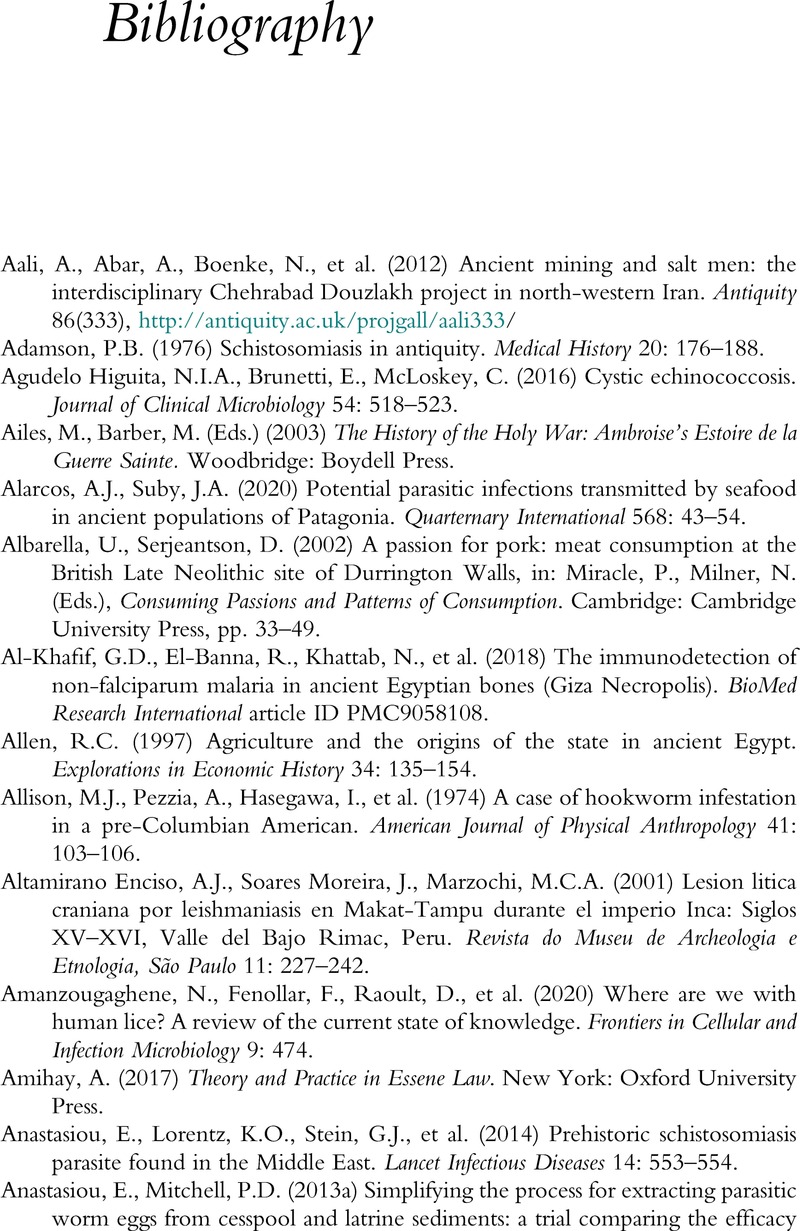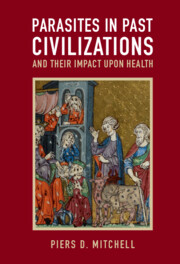Book contents
- Parasites in Past Civilizations and Their Impact upon Health
- Parasites in Past Civilizations and Their Impact upon Health
- Copyright page
- Contents
- Acknowledgements
- 1 Introduction
- 2 Near Eastern Civilizations
- 3 Ancient Egypt and Nubia
- 4 The Prehistoric Peoples of Europe
- 5 The Roman World
- 6 Medieval Europe
- 7 East Asian Civilizations
- 8 North American Indigenous Peoples
- 9 South and Central American Civilizations
- 10 Parasites, Migrations, and Epidemics
- 11 Conclusion
- Bibliography
- Index
- References
Bibliography
Published online by Cambridge University Press: 30 March 2023
- Parasites in Past Civilizations and Their Impact upon Health
- Parasites in Past Civilizations and Their Impact upon Health
- Copyright page
- Contents
- Acknowledgements
- 1 Introduction
- 2 Near Eastern Civilizations
- 3 Ancient Egypt and Nubia
- 4 The Prehistoric Peoples of Europe
- 5 The Roman World
- 6 Medieval Europe
- 7 East Asian Civilizations
- 8 North American Indigenous Peoples
- 9 South and Central American Civilizations
- 10 Parasites, Migrations, and Epidemics
- 11 Conclusion
- Bibliography
- Index
- References
Summary

- Type
- Chapter
- Information
- Parasites in Past Civilizations and Their Impact upon Health , pp. 137 - 171Publisher: Cambridge University PressPrint publication year: 2023



